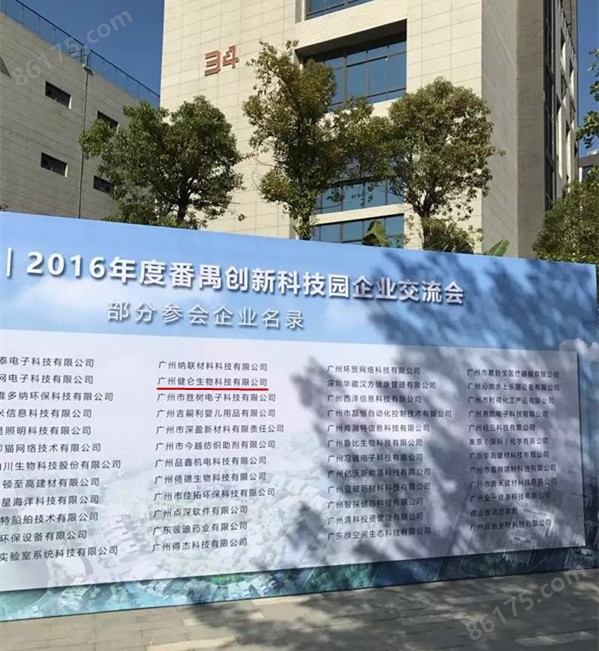其他品牌 品牌
代理商厂商性质
广州市所在地
贾第虫病毒快检卡(胶体金法)
广州健仑生物科技有限公司
Cellabs公司是一个的生物技术公司,总部位于澳大利亚悉尼。专门研发与生产针对热带传染性疾病的免疫诊断试剂盒。其产品40多个国家和地区。1998年,Cellabs收购TropBio公司,进一步巩固其在研制热带传染病、寄生虫诊断试剂方面的位置。
贾第虫病毒快检卡(胶体金法)
该公司的Crypto/Giardia Cel IFA是国标*推荐的两虫检测IFA染色试剂、Crypto Cel Antibody Reagent是UK DWI水质安全评估检测的*抗体。
【Cellabs公司中国总代理】
Cellabs公司中国代理商广州健仑生物科技有限公司自2014年就开始与Cellabs公司携手达成战略合作伙伴,热烈庆祝广州健仑生物科技有限公司成为Cellabs公司中国总代理商。
我司为悉尼Cellabs公司在华代理商,负责Cellabs产品在中国的销售及售后服务工作,详情可以我司公司人员。
主要产品包括:隐孢子虫诊断试剂,贾第虫诊断试剂,疟疾诊断试剂,衣原体检测试剂,丝虫诊断试剂,锥虫诊断试剂等。
广州健仑生物科技有限公司与cellabs达成代理协议,欢迎广大用户咨询订购。
我司还提供其它进口或国产试剂盒:登革热、疟疾、流感、A链球菌、合胞病毒、腮病毒、乙脑、寨卡、黄热病、基孔肯雅热、克锥虫病、违禁品滥用、肺炎球菌、军团菌、化妆品检测、食品安全检测等试剂盒以及日本生研细菌分型诊断血清、德国SiFin诊断血清、丹麦SSI诊断血清等产品。
欢迎咨询
欢迎咨询2042552662
【Cellabs公司产品介绍】
公司的主要产品有:隐孢子虫诊断试剂,贾第虫诊断试剂,疟疾诊断试剂,衣原体检测试剂,丝虫诊断试剂,锥虫诊断试剂等。Cellabs 的疟疾ELISA试剂盒成为临床上的一个重要的诊断工具盒科研上的重要鉴定工具。其疟疾抗原HRP-2 ELISA检测试剂盒和疟疾抗体ELISA检测试剂盒已经成为医学研究所的*试剂盒。Cellabs产品主要包括以下几种方法学:直接(DFA)和间接(IFA)免疫荧光法,酶联免疫吸附试验(ELISA),和胶体金快速测试。所有产品都是按照GMP、CE标志按照ISO13485。
二维码扫一扫
【公司名称】 广州健仑生物科技有限公司
【】 杨永汉
【】
【腾讯 】 2042552662
【公司地址】 广州清华科技园创新基地番禺石楼镇创启路63号二期2幢101-3室
【企业文化】



贾第虫,寄生人体小肠、胆囊主要在十二指肠,,致贾第虫病(giardiasis),为人体肠道感染的常见寄生虫之一。
本虫分布于。本病除地方性流行外,还可导致水源性暴发性流行。近十多年来,由于旅游事业的发展,在旅游者中发病率较高,故又称旅游者腹泻,已引起各国的重视。近年发现艾滋病患者常可合并本虫感染。本虫生活史中有滋养体和包囊两个不同的发育阶段。
1.滋养体 呈倒置梨形,大小长约9.5~21µm,宽5~15µm,厚2~4µm。两侧对称,背面隆起,腹面扁平。腹面前半部向内凹陷成吸盘状陷窝,借此吸附在宿主肠粘膜上。有4对鞭毛,按其位置分别为前侧鞭毛、后侧鞭毛、腹鞭毛和尾鞭毛各1对,依靠鞭毛的摆动,可活泼运动。经铁苏木素染色后可见有1对并列在吸盘状陷窝的底部卵形的泡状细胞核,各核内有一个深染点(过去认为是核仁,zui近研究表明核内并无核仁结构)。虫体有轴柱1对,纵贯虫体中部,不伸出体外。在轴柱的中部可见2个半月形的中体(medianbody),轴柱前端,介乎二盘状陷窝前缘之间有基体复合器(kinetosomalcomplex),为4对鞭毛的发源处。滋养体期无胞口,胞质内也无食物泡,以渗透方式从体表吸收营养物质。
2.包囊 为椭圆形,囊壁较厚,大小为10~14×7.5~9µm。碘液染色后呈黄绿色,囊壁与虫体之间有明显的空隙,未成熟的包囊有2个核,成熟的包囊具4个核,多偏于一端。囊内可见到鞭毛、丝状物、轴柱等。
生活史
成熟的四核包囊是感染期,包囊随污染食物和饮水进入人体,在十二指肠内脱囊形成2个滋养体。滋养体主要寄生在人的十二指肠内,有时也可在胆囊内,借吸盘状陷窝吸附肠壁,营纵二分裂法繁殖。如果滋养体落入肠腔而随食物到达回肠下段或结肠腔后,就形成包囊,随粪便排出。一般在硬度正常粪便中只能找到包囊。滋养体则可在腹泻者粪便中发现。包囊在外界抵抗力较强,为传播阶段。据估计,一次腹泻粪便中滋养体可超过140亿个,一次正常粪便中可有包囊9亿个。
Giardia, a parasitic human small intestine, gallbladder, mainly in the duodenum ,, is one of the common human intestinal parasitic infection caused by giardiasis (giardiasis).
The insects are distributed in. In addition to endemic epidemics, this disease can also lead to the emergence of waterborne fulminant epidemics. In the past decade or so, because of the development of tourism, the incidence rate among tourists is high. Therefore, it is also called tourists' diarrhea and has attracted the attention of various countries. In recent years, it has been found that AIDS patients can often be infected with this infection. There are two different development stages of trophozoites and cysts in the life history of this worm.
1. The trophozoites are inverted pears, about 9.5 to 21 μm long, 5 to 15 μm wide, and 2 to 4 μm thick. Symmetrical on both sides, with raised back and flat ventral surface. The front half of the abdomen is indented into a sucker-like lacunae, thereby adsorbing on the intestinal mucosa of the host. There are four pairs of flagella their flagella positions respectively front, rear flagella, the ventral tail and flagella flagella 1 pair, relying swing flagella can be lively motion. After staining with iron hematoxylin, there were 1 pair of vesicular nuclei at the bottom of the cups juxtaposed in a sucker-like lacuna. There was a deep smear in each nucleus (previously considered to be a nucleolus. Recent studies showed that there is no nucleolar structure in the nucleus) . The body has a pair of shafts, which runs through the middle of the body and does not extend out of the body. In the middle of the shaft column, two half moon-shaped media bodies are visible. The front end of the shaft column, with a kinetosomal complex between the two disk-shaped lacunae, is the origin of the four pairs of flagella. There is no mouth in the trophozoite period and there is no food bleb in the cytoplasm. It absorbs nutrients from the body surface in a penetrating manner.
2. The cysts are oval in shape and have a thick cyst wall that is 10 to 14 x 7.5 to 9 μm in size. After the iodine stained yellow-green, clear between the wall and the void parasites, there are two immature capsule core, encapsulated with a mature core 4, more biased towards one end. Flagella, filaments, and shafts can be seen in the capsule.
Life history
Mature quad-nuclear cysts are infectious, and the cysts enter the body with contaminated food and drinking water and form two trophozoites within the duodenum. The trophozoites are mainly parasitized in the duodenum of humans and sometimes in the gallbladder. They can suck the intestinal wall by suction cup-like lacunae and grow by breeding. If the trophozoite falls into the intestine and the food reaches the lower ileum or the lumen of the colon, a cyst is formed and excreted with the feces. Normally only cysts can be found in normal durs. Trophozoites can be found in feces of diarrhea. Encapsulation is stronger in the outside world and is a transmission stage. It has been estimated that there may be more than 14 billion trophozoites in fecal diarrhea, and there may be 900 million cysts in one normal feces.